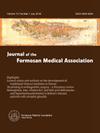中心粒在牙齿生长和发育中的关键作用
IF 2.6
3区 医学
Q1 MEDICINE, GENERAL & INTERNAL
引用次数: 0
摘要
牙齿的发育依赖于牙釉质和牙本质的相互作用,形成牙齿的结构。中心粒影响细胞方向,对干细胞分化至关重要。异常的中心粒会导致亨廷顿舞蹈病和癌症等疾病。中心粒相关基因突变,如中心心包蛋白和中心体p4.1相关蛋白(CPAP),导致牙齿异常,小头畸形。本研究探讨了成釉细胞中中心粒在磨牙生长过程中的作用,揭示了牙齿发育机制。方法采用免疫荧光法和苏木精、伊红染色法观察C57BL/6小鼠磨牙组织(1、3、5、7、9 d)中心粒的变化。重点比较了巢蛋白介导的Cpap条件敲除p53缺陷小鼠(Cpap(-/-)小鼠)和正常小鼠第九天的牙釉质和成釉细胞中心粒的差异。结果小鼠磨牙组织成釉细胞和牙釉质在出生后1 ~ 9天发生了明显变化。成釉细胞的中心粒表现出动态的时间定位,从细胞核向牙釉质生成方向迁移。牙釉质厚度与中心粒数量呈正相关。在第9天对正常小鼠和Cpap(-/-)小鼠进行比较分析,发现牙釉质厚度、成釉细胞延伸和中心粒分布存在差异,突出了Cpap缺乏对牙齿发育的影响。结论本研究证实了成釉细胞纤毛中心粒对分泌期牙釉质生长的积极作用。中心粒增加与牙釉质形成增强相关。相反,CPAP缺失会破坏中心粒组织,影响成釉细胞的形态和功能,类似于在小头畸形患者中观察到的牙釉质发育不良。进一步的研究是必要的,以揭示分子机制和潜在的相互作用与成牙细胞中心粒。本文章由计算机程序翻译,如有差异,请以英文原文为准。
The crucial role of centrioles in tooth growth and development
Background
Tooth development hinged on reciprocal interactions between enamel and dentin, shaping tooth structures. Centrioles influenced cellular direction, critical for stem cell differentiation. Aberrant centrioles contributed to conditions like Huntington's disease and cancers. Centriole-related gene mutations, like Pericentrin and Centrosomal P4.1-associated protein (CPAP), led to tooth abnormalities, microcephaly. Our study explored the role of centrioles in ameloblasts during molar growth, shedding light on tooth development mechanisms.
Methods
Tissue sections underwent immunofluorescence and hematoxylin and eosin staining to observe centriole changes in C57BL/6 mouse molars (1,3,5,7, and 9 days). Emphasis was placed on comparing centrioles in enamel and ameloblasts between Nestin-Cremediated Cpap conditional knockout in p53-deficient mice (Cpap(-/-) mice) and normal mice on the ninth day.
Results
In mouse molar tissue, ameloblasts and enamel underwent notable changes during the 1-9 days after birth. Centrioles in ameloblasts exhibited dynamic temporal localization, migrating away from cell nuclei towards enamel generation. Correlation between enamel thickness and centriole quantity suggested a relationship. Comparative analysis of normal and Cpap (-/-) mice on the ninth day revealed differences in enamel thickness, ameloblast elongation, and centriole distribution, highlighting the impact of CPAP deficiency on tooth development.
Conclusion
This study affirmed the positive contribution of ciliated centrioles in ameloblasts to enamel growth during the secretory phase. Increased centrioles correlated with enhanced enamel formation. Conversely, CPAP loss disrupted centriole organization, impacting ameloblast morphology and functionality, resembling enamel hypoplasia observed in microcephaly patients. Further research is essential to unravel molecular mechanisms and potential interactions with odontoblast centrioles.
求助全文
通过发布文献求助,成功后即可免费获取论文全文。
去求助
来源期刊
CiteScore
6.50
自引率
6.20%
发文量
381
审稿时长
57 days
期刊介绍:
Journal of the Formosan Medical Association (JFMA), published continuously since 1902, is an open access international general medical journal of the Formosan Medical Association based in Taipei, Taiwan. It is indexed in Current Contents/ Clinical Medicine, Medline, ciSearch, CAB Abstracts, Embase, SIIC Data Bases, Research Alert, BIOSIS, Biological Abstracts, Scopus and ScienceDirect.
As a general medical journal, research related to clinical practice and research in all fields of medicine and related disciplines are considered for publication. Article types considered include perspectives, reviews, original papers, case reports, brief communications, correspondence and letters to the editor.

 求助内容:
求助内容: 应助结果提醒方式:
应助结果提醒方式:


